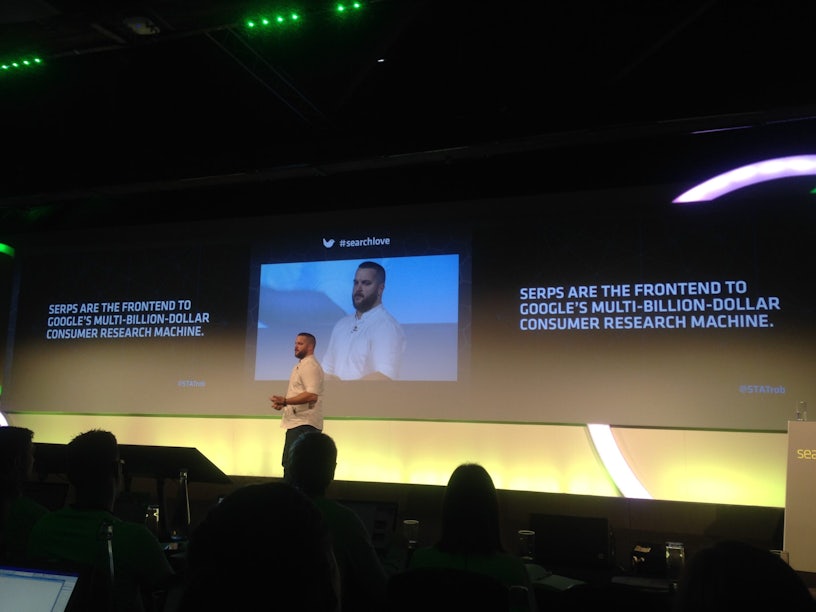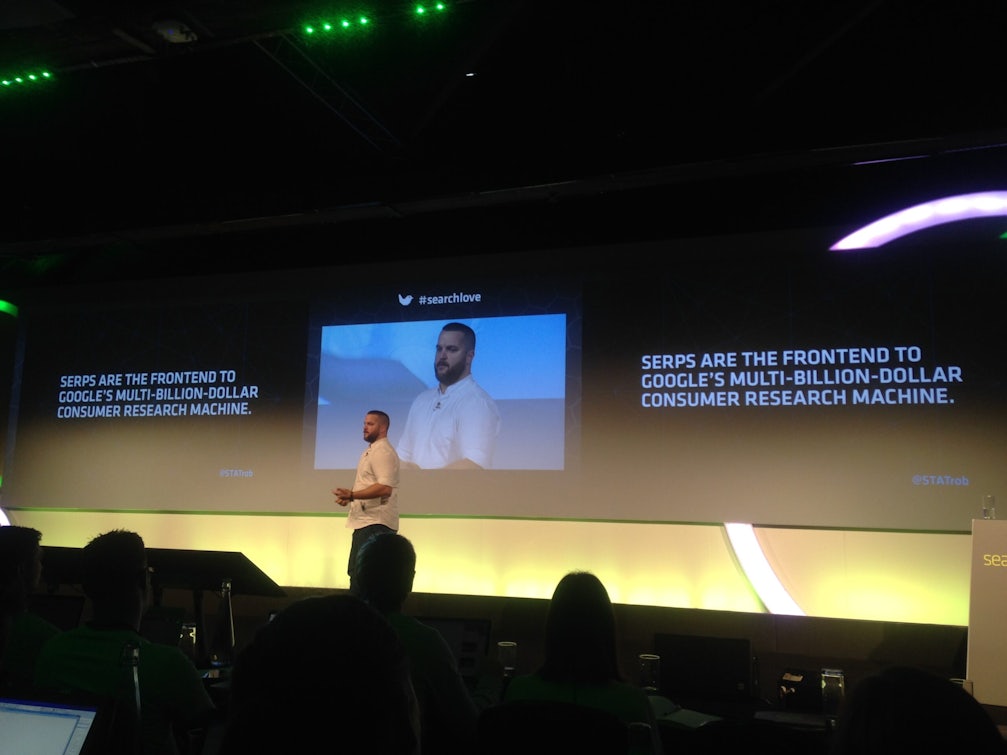Rob suggests that the SERPs are the front end to Google’s multi billion dollar consumer research machine. We can snoop on Google’s research by watching the SERPs.

Let’s talk intent
Consumer search intent is roughly categorised into:
- Informational
- Commercial
- Transactional
Google suggests that demographics are not enough to tell us about our audience. Intent is much more important.
It means if you’re there when they’re looking for something and you answer that query well, it doesn’t matter if they’re loyal to another brand.
STAT has researched this. They looked at 14 categories and a lot more queries and modified them for different parts of the intent funnel. But, he says, keyword research isn’t like this in real life, it’s much more nuanced – but for the purposes of their study, they looked at fairly basic queries to analyse the intent.
“Share of intent”
It’s basically share of voice. It’s a way of measuring how much coverage your brand gets. STAT’s own share of voice metric is very similar.
Information intent stage
Once you’ve identified your information intent keywords, you want to know what type of search results come up. In Rob’s example, 42% were Shopping results (because his data set were mainly ecommerce keywords, so not a surprise). Then came image results. He was able to see all of this through STAT.
Lesson 1: recognise when you need a paid strategy, e.g. when Shopping ads are prevalent
Lesson 2: Look for strong bias toward certain sites – can you really displace Wikipedia?
Lesson 3: Look at the SERP topologies, what blend of result types come up? This isn’t random, it’s based on their research, so you know what type of content you need to be producing based on that.
Commercial intent
Again here, we want to see what kind of SERPs results come up beyond the traditional organic listing.
Lesson 1: By using share of voice, we can measure which websites are winning.
Lesson 2: Perform share of voice analysis on types of SERPs – are they winning on organic or other formats?
Lesson 3: Look at what type of content Google surfaces to understand what kind of content you need to produce.
Transactional intent
Here, Rob found much more Shopping coverage – which makes sense for his commercial keyword set.
He found the websites ranking for his terms are all winning based on organic search results, not on news or video or answers. In a way, this justifies SEO work where we typically focus on the transactional with our organic results.
You need to ask yourself at this stage:
- Are we ranking high?
- Are we ranking the right content?
To work out the right content, we can tag up URLs based on what type of content it was, then assess which of our pages we should be optimising for and building. Look at what Google is promoting and rewarding with high rankings and emulate that content strategy.
Lesson 1: The deeper you go in the funnel, the more you have to rely on organic results.
Lesson 2: We can analyse ranking URLs to find out what UX satisfies the user intent.
Conclusions
Remember Google’s advice. You have to be there, be useful and be quick.
Quality keyword research is therefore essential. You can only do this well when you speak to customers about how they search – keyword tools come next. We need to use psychological understanding to group those keywords by intent.
You’ll know if you’re useful by reviewing that type of content Google already uses. You can then adapt your strategies for that.
To be quick, optimise your site speed.
At the end of the day, universal results make up 15%, 11% and 10% of the searches in Rob’s study for the three categories of informational, commercial and transactional respectively. It may not sound like a high proportion, but consider the share of voice that those things have. Take the time to figure out if you can rank
- Optimising for universal results is the best way to satisfy user intent
- You can snoop by looking at topologies
- Different result types rise and fall in value through the funnel
- Wit knowledge of intent we can craft the right content for the right moment
- This kind of analysis is easy to do when you have the right tool
Check out more research in this whitepaper: https://getstat.com/searchlove/



